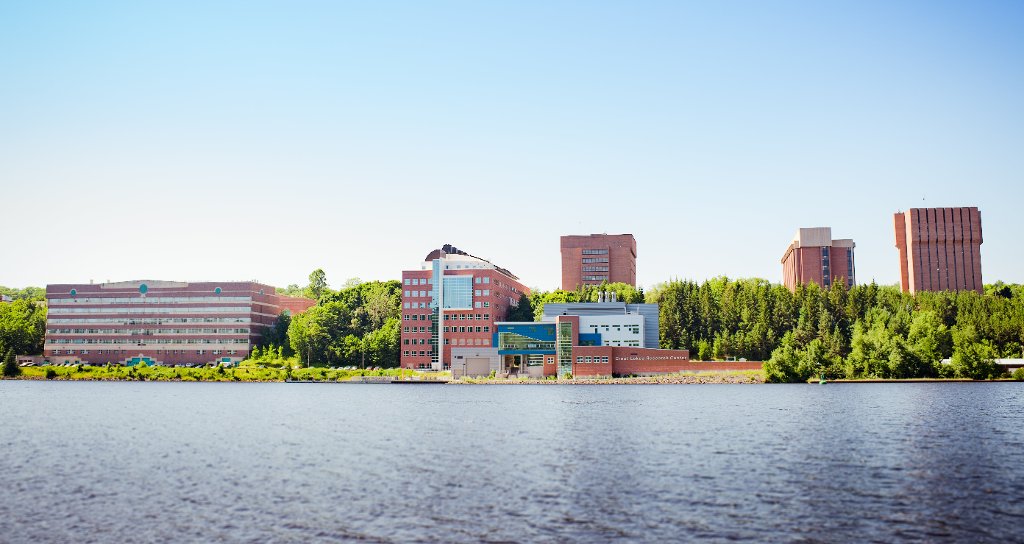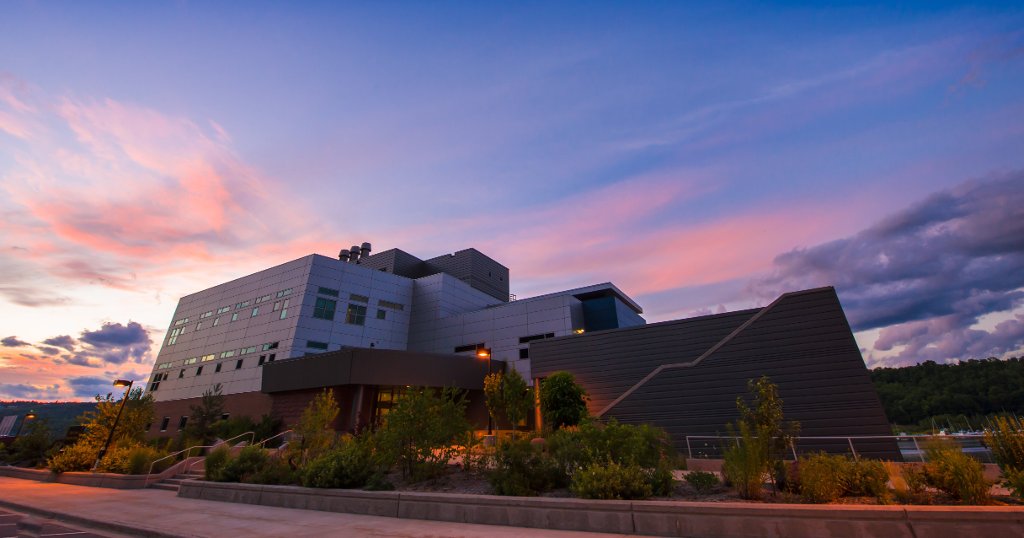This is the fourth in a series of opinion pieces from leaders around campus on the role that Michigan Tech innovators will play to define the world's emerging needs.
Research is the backbone of the technological advantage the U.S. has held since World War II, and the security of our nation depends on technological superiority. The world is getting smaller through digital connectivity, open-source data, the ability of artificial intelligence to generate secure information from a cacophony of open sources, and increased collaboration across international borders. This increases the need for decisive advances in national security.
At Michigan Tech, our faculty, staff and students understand and appreciate the need to support national security research efforts. Over the next decade, national security needs will rapidly expand in the areas of both physical security and cyber security. This extends beyond just protecting the nation's military secrets, affecting areas such as food security, water security, industrial intellectual property security, climate resiliency, energy security, cybersecurity, civil infrastructure security and more. Protecting the interests of our nation means developing and protecting the best technology in all areas.
However, being the worldwide leader in technology also makes the U.S. the top target for espionage, including industrial espionage, cyber attacks and physical threats. Michigan Tech is poised to help mitigate these national security risks while at the same time developing new technologies with integrated protections.
Below are three of the most pressing national security questions that society will be facing in 2035, as well as Michigan Tech's best opportunities for answering them. The convergence of our core values as an engineering and scientific university with strengths in computing, cybersystems and defense platforms creates the opportunity for us to lead in this vital area of technology discovery.
How do we continue to fill our domestic workforce needs in all national security areas?
In 2035, there will be a massive demand for advanced science and technology workers in the national security arena due to completed and impending retirements of baby boomers and Generation X. This is the single greatest threat to our national security. Without continued development of new and innovative ideas and the ability to turn those ideas into actions, the U.S. will not be able to stay ahead of our competition. This requires a massive investment in domestic talent from diverse backgrounds at all degree levels: B.A., B.S., M.S. and Ph.D.
The required talent closely resembles the student body of Michigan Tech: engineers, physical scientists, computer scientists, social scientists, business and finance experts, mathematicians and more. More importantly, that talent needs to be cross-trained in multiple fields and understand how to work fluidly in interdisciplinary groups.
Workers from all disciplines will need to be fluent in applying machine learning and artificial intelligence tools to their specific disciplinary problems. The successful completion of graduate degrees by domestic students from diverse backgrounds will be vital to maintaining next-generation technological superiority. In addition, the breakneck speed of technological advancement will make continuing education a requirement for the existing workforce. Artificial intelligence will only increase the speed at which technology advances and will further cement the need for continuous education throughout a career in national security.
We can position Michigan Tech to lead in developing the workforce of 2035 through innovative recruiting and course delivery methods, cross-training of our students, strengthening our research portfolio and developing a pipeline of diverse students ready to secure our nation's people, infrastructure and data.
How do we address the strategic national security concerns brought about by impending climate change?
Climate change is not commonly talked about or thought of as a defense issue. However, in a 2021 climate risk analysis report to the National Security Council, the U.S. Department of Defense (DoD) identified climate change as a reshaper of operational environments and a direct threat to global stability. Climate change is a recognized threat multiplier, meaning it exacerbates existing global tensions and vulnerabilities, from political instability to resource scarcity.
Changes in the Arctic are opening up new transit ways and resource extraction opportunities that need to be protected, monitored and defended. Changes in available arable lands and water resources are driving population displacements and causing conflicts over these scarce resources. Changes in sea level are affecting the accessibility of naval ports. Extreme weather events, which are becoming more frequent due to climate change, have already caused billions of dollars of infrastructure damage for the United States military and are predicted to be one of the most likely and severe global risks for everyone over the next decade.
Michigan Tech's researchers and faculty have already established multidisciplinary collaborations bringing together their expertise in defense applications, environmental sciences, geospatial analysis, and large-scale data analytics — which are just a few of the disciplines that will be needed to address these issues head-on for the DoD.
Tech researchers understand a variety of natural ecosystems — including water, arctic and terrestrial environments — and are leaders in climate research. Tech is poised to provide infrastructure solutions, sustainable energy solutions, climate migration analysis, remote sensing monitoring tools, and a variety of other sustainable technologies required by the DoD as it tackles the effects of climate change on our national security.
As a midsized university, Tech is both large enough to have the technical breadth required to address these issues and "small enough" to have true interdisciplinary teams formed through collaborative efforts. We have the agility to respond to needs with both the speed required by the DoD and the scientific rigor to create the right solution at the right time.
How can the US military adapt to the proliferation of 'MacGyvered' technology solutions in the battlespace?
The recent conflicts in both Ukraine and Gaza highlight a distinct change in the battle landscape — low-cost, disposable solutions created from commercial off-the-shelf (COTS) parts are joining "exquisite" engineered technologies as an integral part of the overall posture. Some of these COTS systems are capable of going toe-to-toe with the traditional systems, as seen in Ukraine, where disposable drones are effectively combating and disabling tanks. A favorite term among the service components is "MacGyverability" — the ability to take readily available resources and make a solution that is effective, within budget and able to be delivered/created in a timely fashion.
By 2035, as the cost of the component hardware continues to fall and the proliferation of open-source solutions allows for easier adoption, how can U.S. armed services guarantee that the men and women serving the nation have access to the best technology available? How can we more effectively support our allies and help them MacGyver their own solutions? How do we maintain our technical advantage within this new paradigm?
To retain our technological advantage with these MacGyvered solutions, we need to fight smarter, not harder.
This is exactly the mentality of the Michigan Tech community. Huskies are already accustomed to taking minimal resources and getting maximal results. We focus not just on the fundamental technologies, but also the applications driving the need for these technologies. In 2035, Michigan Tech will be poised to lead in providing effective components for these technologies — whether they be cutting-edge algorithms that are hardware agnostic, newly developed platforms and sensors, or exploitations of existing COTS hardware that unlock the highest performance. We can reach this position of leadership through the expansion of current research thrusts in hardware, software and algorithms; the establishment of additional cross-disciplinary research teams; and the continued support of hands-on learning experiences for the next generation of researchers and engineers.
*****
So, how is Michigan Tech positioned to address the evolving national security needs as we approach 2035?
Michigan Tech has a significant defense portfolio, with over 35% of external federal funding in fiscal year 2024 coming from the U.S. Department of Defense. We have positioned ourselves as a trusted partner of the DoD, with the scientific and technological expertise to tackle the toughest challenges. As a nonprofit educational institution, the government looks to us and other like-minded groups to provide accurate, scientific guidance in a manner that is not driven by profit. There is no doubt in their minds that Michigan Tech is driven by the desire to support and defend our nation — a goal we can work toward through the privilege of problem-solving for the DoD. Through the University's technological backbone, cross-domain expertise and ability to be agile and respond quickly to changing research thrusts, we are poised to continue our strong relationships within the defense and intelligence industries and remain at the forefront of solving the toughest technological challenges.
Michigan Technological University is an R1 public research university founded in 1885 in Houghton, and is home to nearly 7,500 students from more than 60 countries around the world. Consistently ranked among the best universities in the country for return on investment, Michigan's flagship technological university offers more than 185 undergraduate and graduate degree programs in science and technology, engineering, computing, forestry, business, health professions, humanities, mathematics, social sciences, and the arts. The rural campus is situated just miles from Lake Superior in Michigan's Upper Peninsula, offering year-round opportunities for outdoor adventure.





Comments